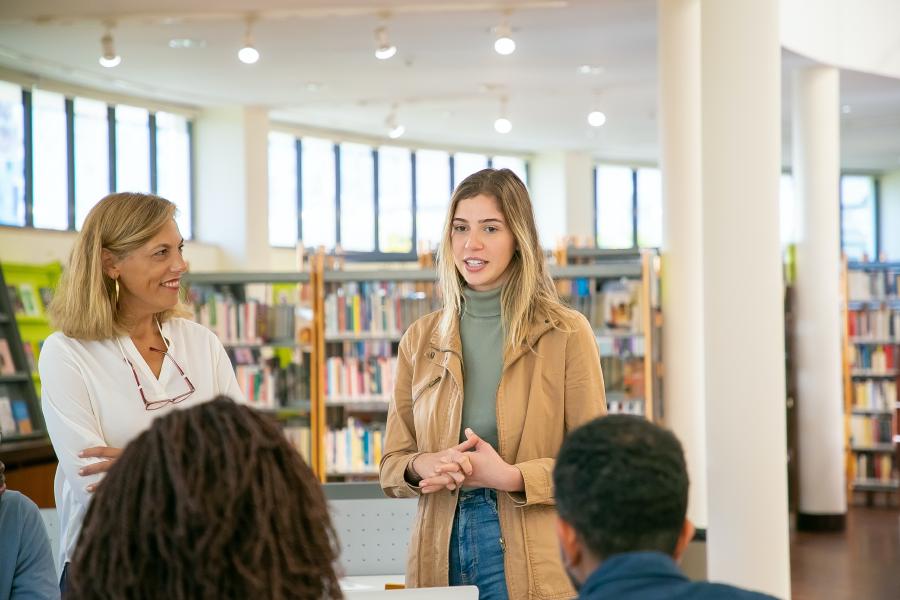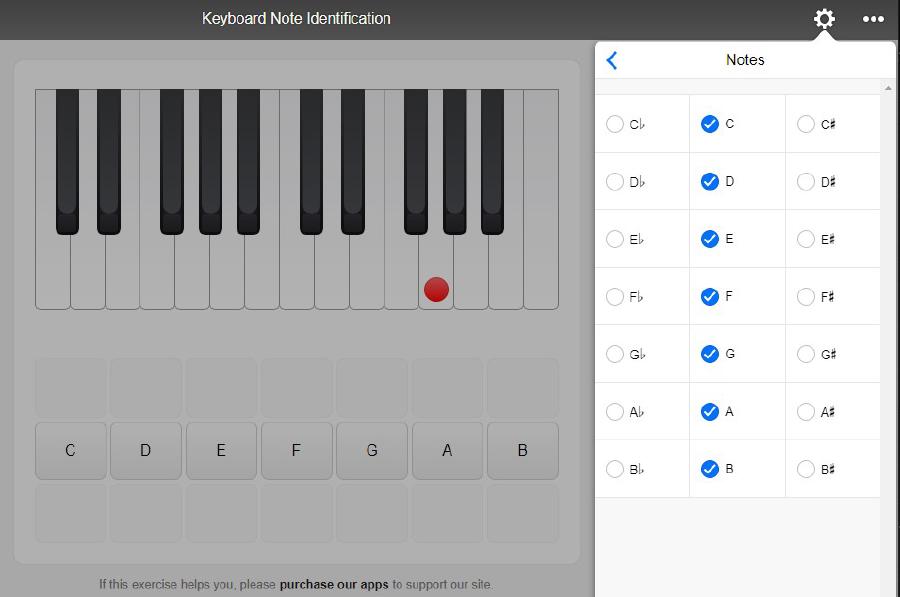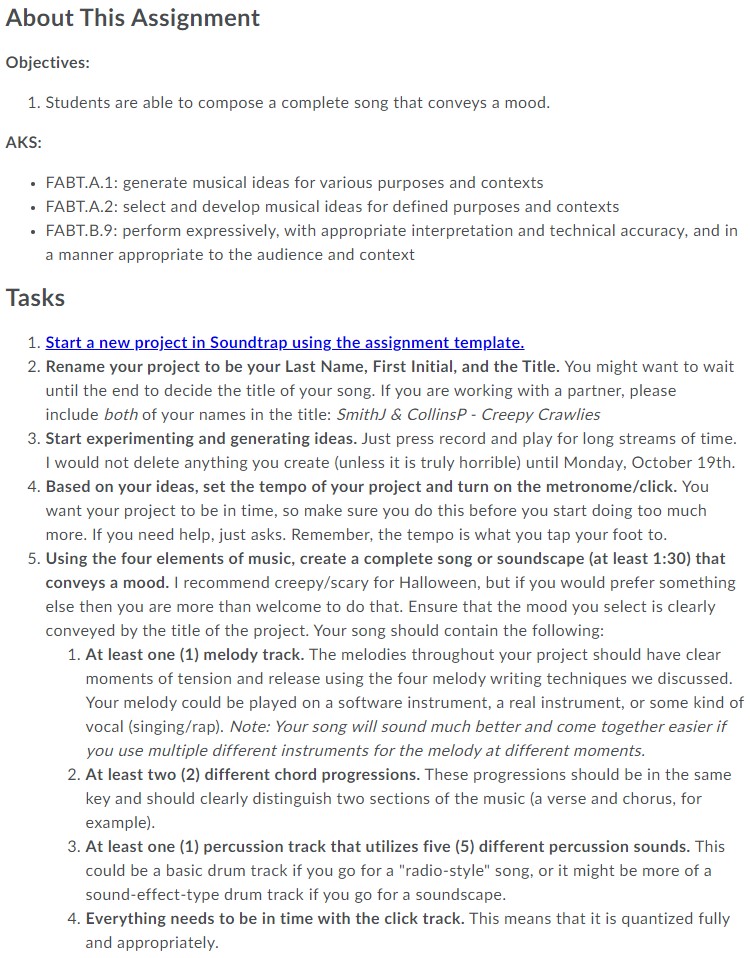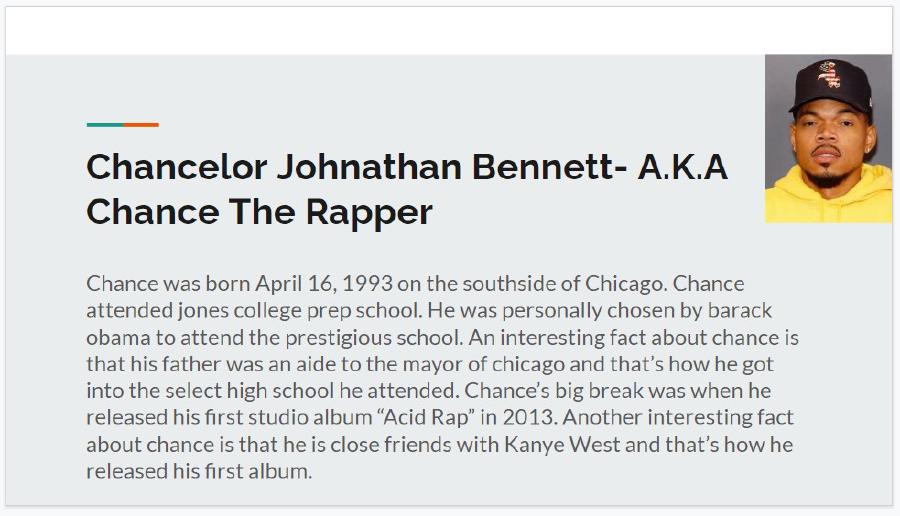
Authentic and Adaptive Assessment
Assessment is probably the most misunderstood part of the learning cycle, resulting it being implemented poorly.
Most assessments are archaic. At best, they focus on having the learner apply a concept to an isolated problem, but more often than not they focus on simple recall and understanding.
Was this important prior to the internet? Probably.
Is it still important now that the whole internet is in our pocket? Absolutely not.
It is about time we modernize assessment so that it is authentic to what learners will experience in today’s world, while also leveraging modern technologies to make it adaptive as well.
Self-Assessment
To really leverage assessment, consider the power of self-assessment. Not only does this provide learners with time to reflect on the gaps in their content knowledge, but it also gives them insight into what works and doesn’t work for them as a learner.
Just like an educator will self-assess their lessons and make adjustments in their content and delivery, a learner can learn to make adjustments in how they choose to acquire knowledge. The ultimate goal for both is to increase learning outcomes during the next learning cycle.
Co-Planning

Co-planning is an extension to self-assessment where the educator and learner meet one-on-one throughout a learning cycle to discuss learning progress. During the first couple of meetings, both the educator and learner take equal control over the conversation. This balance begins to shift as the learner makes progress towards their learning goal.
The learner is responsible for providing a summary of what they have learned, what they have worked on, and what they plan to do next. While the learner is talking, it is the educator’s resposibility to probe the learner about their learning process with the goal of helping them develop a model for self-assessment of both their learning and creative processes. These probing questions should be personalized to the learner and their learning cycle, but a few common question sequences would be:
- What were you trying to research? What search terms did you use? Did you find what you were looking for? Why or why not? How might you be able to refine your search in future?
- How is your project going so far? What are you struggling with at the moment? What have you tried to solve the problem? Did it work? Why or why not?
Blogging

If co-planning is a way for the educator to model self-assessment, blogging is a great way to have learners probe their own learning and creative processes. It asks them to not only self-assess, but to also organize their thoughts and make them concrete. This artifact can be referenced by the educator during co-planning sessions to further develop the learner’s self-assessment model.
Blogging also provides a unique opportunity to have learners use technology for the purpose of archiving not only what they are learning but also how they are learning. By taking inventory of what did and didn’t work, the learner begins the process of optimizing their learning by identifying certain approaches to avoid and others to focus on instead.
At the completion of a learning cycle, learners can go back and read their old reflections before providing a cumulative self-assessment.
Presenting

Presentations, while generally loathed by learners, are an important part of the learning cycle. They make learners uncomfortable but there is no reason to be nervous sharing something that they are proud of. For those that are nervous, I am reminded of something that my trumpet professor used to say in my undergraduate studies.
Performing makes us nervous because of a perceived level of importance and a lack of adequate preparation.
The goal of asking learners to present isn’t to make them squirm. It is to let them be the expert on a topic that they have spent so much time learning about. The better that they self-assess and adjusted their learning process, the more prepared they should feel when it is time to present.
Learners should focus on summarizing their learning cycle for the class. This should include what they have learned, how they applied it to their project, and what they wish they would have known at the start of their learning cycle that they know now. When they finish presenting, the class should have the opportunity to probe their peer. This step is essential since the learner’s peers weren’t a part of the co-planning sessions and might not have read their blog posts - they don’t know what they don’t know. This allows the learner to build public speaking skills and showcase their expertise, or provides an opportunity to self-assess why they might have missed a piece of important that their peers asked about.
Content Assessment
Of course, all that self-assessment doesn’t mean that educators shouldn’t assess content knowledge. They absolutely should and it should be as equally as authentic and adaptive as the learner’s self-assessment.
There isn’t anything wrong with having a standard level of knowledge that each learner should have, but this standard is really for “internal use only.” That data is so that educators can self-assess. The external standard, which is what the learners see and experience, should be different for each learner to ensure they can push themselves at an appropriate pace.
Just like each learner will have different needs related to content types and delivery, they will also absorb content at a different pace. By giving them an adaptive standard to shoot for, the bar is never set too high or too low for an individual learner. This allows them to maximize their learning outcomes over time through positive reinforcement rather than enducing stress just because they are behind.
Interactive Tools

Interactive tools are one of the easiest ways to implement adaptive assessment. Most tools will provide settings that the learner can adjust to match their own needs. As artificial intelligence becomes more mainstream, learners will have access to tools that can actively adapt as the student practices.
As an example, composing music has quite a few prerequisite skills necessary in order to be successful. At a minimum, learners need to be able to either identify notes in music notation or the piano roll. There isn’t much to it to get to a functional level, but there is a lot of depth to it that can only be developed with practice over time. Fortunately, there are tools (such as MusicTheory.net’s Keyboard Note Identification Tool) that allow learners to start with the basics and increase the difficulty over time.
The flexibility of these tools make them great for getting new learners working on basic skills while also providing more advanced levels for learns with prior experience. For example, the keyboard note identification tool can be adjusted so that learners totally new to piano can limit themselves to one or two notes to start, but learners that have been playing piano for a while can add time limts to push their identification speed or practice more uncommon note names (such as B# or Cb).
Immediate Feedback

For most educators, having assessments that provide varying difficulty levels and having it adapt to each learner is a luxury that many don’t have. The next best solution is to provide immediate and specific feedback. This allows learners to self-remediate based on their individual misunderstandings.
Most digital assessment platforms provide an option to give specific feedback based on the misunderstanding of the learner. This can be used to make an assumption of why the learner might have selected an incorrect answer, and then provide them with a reference so that they can self-remediate. Although the assessment only has one difficulty level, it is adapted so that each learner is getting specific feedback based on their own mistakes.
Project-Based Learning

All of that is great, but there is no substitute for an authentic assessment. In the real world, learners aren’t going to be randomly taking tests; they will be asked to create something that requires them to acquire and synthesiz knowledge. This is where project-based learning comes in.
Project-based learning is not “now that we have finished reading the book, do a little more research and make your own slideshow.”
Project-based learning is “we are going to compose a song, but while we do that we are going to learn about these composition techniques and t echnologies.”
The learning happens during the project, not prior to the project. This kind of assessment can be time consuming for educators to design and for learners to complete, but the learning outcomes and learner engagement is worth it. A key component to it is ensuring that the project is authentic - how would someone in this career field utilize the knowledge the learns are acquring? A slideshow is not often the answer to that question.
For my music technology courses, all major assessments are completed through projects. In the beginning classes, the learners explore all of the different facets of music technology by composing an original song, composing a remix, producing a podcast, and creating their own sound design and film score for a movie clip. In the intermediate classes, the learners produce archival recordings of all school concerts, compose music by sampling household sounds, produce a children’s audiobook, and compose music for contests. In the advanced classes, the learners develop their own capstone projects that focuses on something applicable to their interests or future career aspirations.
For me, project-based learning is about exposing the learner to career options that might interest them related to my class “Education”, “Personalized Learning”, “Assessment” ] series = “Personalized Learning” +++
Artifacts of Self-Assessment
Co-Planning

At the start of their project, our co-planning sessions are generally an even balance of speaking time between me and the student. As the students start to make significant progress on their projects, they begin to take a more active role in the co-planning sessions. The students generally provide me with a summary of what they have learned, what they have worked on, and what they plan on doing next. During these updates, I probe them about the process they are taking towards completing their project. The goal is that they will gain a model for how to better self-assess their own learning and creative processes. Below are a couple of common question sequences that I use with them in addition to more personalized question sets:
- What were you trying to research? What search terms did you use? Did you find what you were looking for? Why or why not? How might you be able to refine your search in future?
- How is your project going so far? What are you struggling with at the moment? What have you tried to solve the problem? Did it work? Why or why not?
Blog Posts

Each of my upper-level students maintains a personal blog throughout the school year. While this blog serves as an archive or portfolio of the students’ projects throughout the year, it also serves a more vital role as a way for the students to self-assess those projects and the process they have taken learning and creating those projects. In preparing students for these blog posts, they know that they are an opportunity for them to probe themselves like I would I our co-planning sessions. We discuss that being thorough with you assessments now will actually make them better learners in the future as they talk though what did and didn’t work for them. Students complete these reflection blog posts every two weeks so that they have a lot of content to write about and reflect on. Additionally, students complete a post at the end of each project for which they go back and read their old posts and provide a synopsis of their project, their learning, and what they have noticed in their self-assessments.
Project Presentation

At the completion of each project, students will create and present a summary of their project to the class. Similar to the final blog post of the semester, their presentation includes a summary of what they have learned, how they applied it to their project, what they know now that they wished they would have known at the start, and the presentation of their final product. At the conclusion of this presentation, the student serves as the expert on what they created and learned and has to facilitate a short question and answer period from the class. During this time, their peers can ask specifics about the tools or resources they used, about their process, about the final product, or simply give them praise on a job well done. This helps develop the student’s public speaking skills in addition to their ability to self-assess and reflect on the spot in front of peers.
Artifacts of Learner Demonstration

To introduce my first-year students to personalized learning, one of my favorite assignments is a presentation on their favorite album or artist. For this project, the only requirement for the format is that they have to design some kind of presentation that they can share with the class. In the instructions, there is a list of different formats and tools to create those kinds of presentations, but there is also a line stating that if they have another idea for the format they are more than welcome to come talk with me about it. Below is three different formats of this project: Live Tweet, Slideshow, and a Video.
Live-Tweet

Slideshow

Video

Since each of these formats allows for the student to 1) select and share specific pieces of music, 2) discuss the creator’s intent for that piece of music, 3) evaluate and discuss the qualities of that piece of music, and 4) explain why the piece of music is important or meaningful to them, each of the students is able to meet the content standards of the project, which are listed below.
HSMTC1.RE.1 - Choose appropriate music for a specific purpose or situation.
HSMTC1.RE.3 - Support interpretations of musical works (e.g. arrangement, composition, improvisation, mixed-media project, orchestration, sound design) that reflect the expressive intent of creators/performers.
HSMTC1.RE.4 - Support evaluations of musical works (e.g. arrangement, composition, improvisation, mixed-media project, orchestration, sound design) and performances based on analysis, interpretation, and established criteria. a. Apply criteria to evaluate music based on analysis, interpretation, artistic intent, digital, electronic, and analog features, and musical qualities.
HSMTC1.CN.2 - Relate musical ideas to varied contexts and daily life to deepen understanding. Artifacts of Learner Demonstration
Artifacts of Assessment
Interactive Tools

Music technology is an interesting class in that there is a lot of prerequisite knowledge and skills necessary to be successful. Fortunately, many of these initial skills (such as note names) are things that can be developed overtime through repetition and scaling difficulty-level. Some of the tools that I utilize as diagnostic and formative assessments are MusicTheory.Net’s Keyboard Note Identification Tool, which allows the students to practice identifying notes on the piano, and a tuning trainer that I built myself, which allows the students to start developing their ear for tuning. Since both of these tools have ways to scale difficulty, they become great for getting new students start, but also pushing more experienced to get even better. For example, the keyboard note identification tool can be adjusted so that students totally new to reading a piano can limit themselves to one or two notes to start, but students that have been playing piano for a while can practice their speed or more uncommon note names (such as B# or Cb).
Adaptive Quizzes

At various checkpoints throughout each unit, the students take a quiz. These quizzes, which are generally ten multiple-choice questions, are a quick way for the students to check their own understanding and to give me an idea of how well students are mastering the content. When the students submit their quiz, the immediately receive their grade and shown what they missed. In addition to seeing what they missed, the students are also provided with links to review resources. Once they are finished self-remediating, the students can retake the questions that they missed until the demonstrate mastery.
Project-Based Learning

To keep the class authentic, all major assessments are completed through projects. In the beginning classes, the students explore all of the different facets of music technology by composing an original song, producing a podcast, creating their own sound design and film score for a movie clip. In the intermediate classes, the students have the opportunity to record and produce school music concerts, compose music with household sounds, produce an audiobook for children, and compose music for contests. In the advanced classes, the students develop their own capstone projects where they focus on something that is applicable to their interests or future career aspirations. When the students submit their projects, they are graded on a rubric and given specific feedback. Students are allowed to make changes and resubmit until they demonstrate mastery.
Resources
Kingsbury, G. G., Freeman, E. H., & Nesterak, M. (2014, March). The Potential of Adaptive Assessment. Educational Leadership: Using Assessments Thoughtfully, 71(6). http://www.ascd.org/publications/educational-leadership/mar14/vol71/num06/The-Potential-of-Adaptive-Assessment.aspx
Mueller, J. (2018, July 1). Authentic Assessment Toolbox. http://jfmueller.faculty.noctrl.edu/toolbox/index.htm
Office of Educational Technology. (n.d.) Assessment. Department of Education. https://tech.ed.gov/netp/assessment/
Wiggins, G. (1990). The case for authentic assessment. Practical Assessment, Research & Evaluation, 2(2). https://doi.org/10.7275/ffb1-mm19